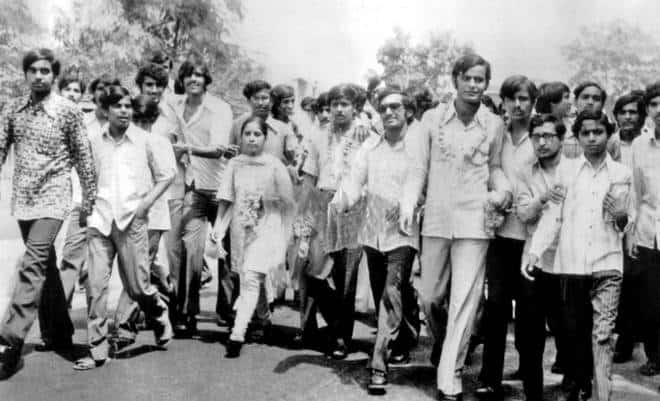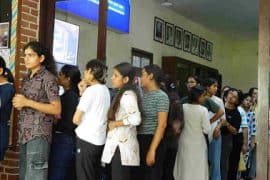The DUSU we recognise today has its roots in the power tussles, falls, and revolutions of the past. How much has it changed? Read on to find out.
As the capital of this democracy, Delhi has always experienced the uprising of revolutionary, sometimes unsettling, but always a realistic picture of the national politics. The student population of the University of Delhi (DU) comprises of 1.5 lakh diverse individuals today. But back in the time when the University was in its inception stages, the issues faced by the country were still concrete and significant although they were not enormous in number. It is not an unexpected predicament that the Delhi University Students’ Union has been addressing and even reflecting the politics of a much larger realm since 1954, when the first polls of the DUSU elections were held.
Paving a path for prominent positions in the national political parties of India, DUSU has had a history of producing leaders who proved their motivation. During the Emergency in the nation, the then General Secretary of DUSU was allegedly jailed and subjected to torture for raising a voice against the advent of fascism. Moulding, adjusting, and
treading the tightrope of similar ideals, the present day parties contesting in the DUSU elections draw a lot of
their narrative, structure, policies, and campaigning methodologies from their older counterparts.
Mirroring the hyped affairs of the contrasting politics of the two most popular political factions today- the Rashtriya Swayamsevak Sangh and the Bharatiya Janata Party on one hand and the Indian National Congress on the other- the DUSU elections of 2018 might create an illusion of a power struggle only between the student units of the said political bodies, namely the Akhil Bharatiya Vidyarthi Parishad and the National Students’ Union of India, respectively. The truth is – like a national democracy cripples without the existence of real choice in its representatives, student governance too suffers a downfall. This is why, choices and political parties have come, gone, and changed through the course of DUSU’s journey.
For instance, the Indian National Students’ Organisation stemmed as the student wing of the Indian National Lok Dal and enjoys strong favorability in the state of Haryana at present. In the year 2008, INSO contributed to a seemingly radical initiative for that time by reportedly being the first party to field a male candidate from the Sikh community for one of the four office bearers in the central panel at the DUSU elections. This report published in The Hindu provides a clarity of thought to the understanding of numerous parties’ participation in bringing the University’s politics to the forefront.
Aam Aadmi Party’s student wing Chhatra Yuva Sangharsh Samiti, a relatively nascent organisation, joining forces with the left-wing All India Students’ Association, may seem like an unprecedented move, for the politics at DU, but the very foundation of the much notable NSUI was laid by the then Prime Minister, Mrs. Indira Gandhi. Saimon Farooqui, the National Secretary at NSUI, told DU Beat that the 2013 DUSU elections were a crutial determinant of the Vidhan Sabha and the Lok Sabha political upheaval and outcome. He believes that the Lok Sabha elections of 2019 too find a significant sway with the DUSU politics for this term.
Almost six decades later, DUSU has seen a plethora of political tussle, and a vision for the future of this University and the capital must not be forgetful of the history that changed its course in every way.
Feature Image Credits: The Hindu
Anushree Joshi



Comments are closed.